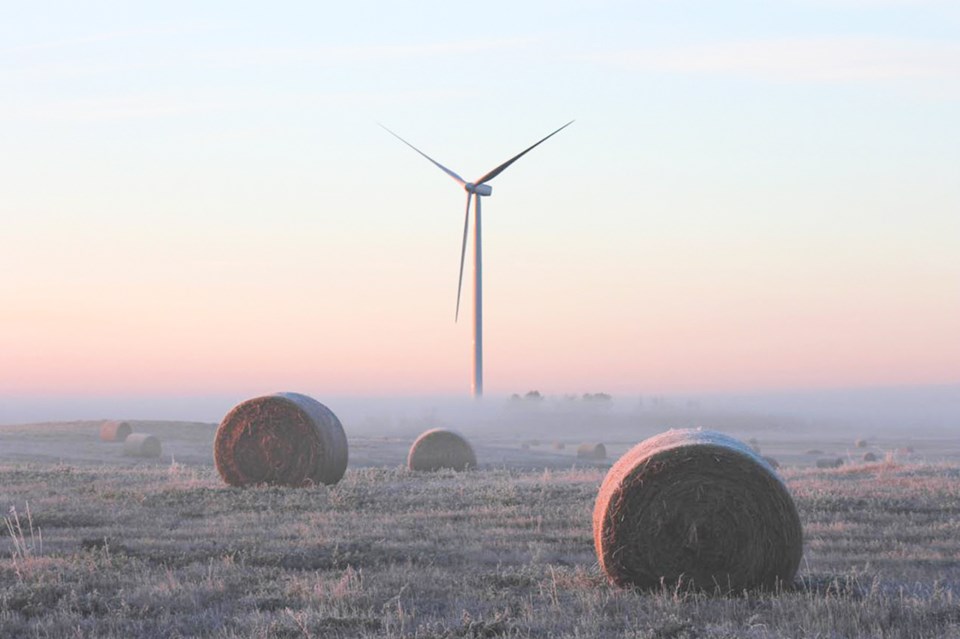SaskPower has awarded its next utility-scale wind facility to Renewable Energy Systems (RES) Canada and Awasis Nehiyawewini Energy Development, a wholly owned Cowessess First Nation entity.
Set to be constructed south of Kipling in the RM of Hazelwood, the RM of Kingsley and on Cowessess First Nation reserve land, the Bekevar Wind Energy Project will supply 200 megawatts (MW) of zero-emissions power, enough to serve up to 100,000 homes.
“Reducing greenhouse gas emissions by at least 50 per cent below 2005 levels by 2030 is a priority for SaskPower,” said Mike Marsh, SaskPower president and CEO in a news release. “Incorporating wind power through projects such as Bekevar is a crucial component of our strategy to make significant reductions to emissions while ensuring SaskPower can supply reliable, sustainable and affordable power to our customers.”
"To be awarded with the Bekevar project in collaboration with RES is a milestone for our First Nation, which helps continue to lead Indigenous renewable energy development in Saskatchewan," said Chief Cadmus Delorme in a news release.
"We look forward to utilizing what Mother Earth has granted us with, while working with RES to help Saskatchewan achieve the desired carbon reduction targets."
Gary Vargo, administrator for the R.M. of Hazelwood, said they’ve had minimal negative comments regarding this project.
“We’ve had far more positive comments.”
“It’s certainly going to change the looks of the landscape, but we’ve gotten used to looking at oil wells when at one time they were few and far between in this area.”
“Green energy is here to stay,” comments Vargo.
The size of the turbine is yet to be determined whether it’s between a five and six-megawatt (MW) turbine in the 200-MW project.
“We haven’t seen a turbine layout as of yet,” explains Vargo.
The majority of the land for this project lies in the R.M. of Hazelwood east of the 605 grid.
Vargo feels that this project will be positive for the community:
“The community as a whole will benefit as there’s going to be a lot of construction and a lot of job opportunities. We’ve got good construction companies here.”
“They will also need long-term employees for maintenance after the project is finished.”
“It will be a boost to the economy,” explains Vargo. “For the municipality, there will be taxation. There will be a taxation boost as far as the assessment. That not only puts money into the municipality which in turn can put money back into the community and it helps the other ratepayers of the municipality too. The higher our assessment is, the lower the taxes everyone has to pay. It will be an income boost for the landowners involved.”
“For the most part, our ratepayers believe it’s good for the community,” says Vargo.
Holly Heikkila, administrator for the RM of Kingsley, says: “We’re right on the edge of the project so Kingsley won’t have near as many turbines although the specifics of the project haven’t been figured out yet.”
“I think it will definitely have a positive impact on the community,” says Heikkila. “They’re hoping to use local contractors to do some of the work for some of the construction and installation.”
It generates more tax revenue for the municipalities.
“We’re one step closer to showing that we’re supportive of going green.”
“This project is very positive for the community,” says Heikkila.
“The number one question I’ve been asked is ‘How many turbines are going up?’ which is a question I can’t answer.”
“Landowners wouldn’t sign up if they didn’t feel this project was a good idea,” explains Heikkila.
“It’ll certainly be a change to the landscape…first it was oil, now it’s wind turbines.”
Another concern with some is how much noise do they make with the humming and the swoosh sound with every turn.
connect the new facility to the grid. This line will run from the Kennedy Switching Station to the new facility.
Construction and site development of the project is targeted in the summer of 2022 with completion expected by the end of 2023.




